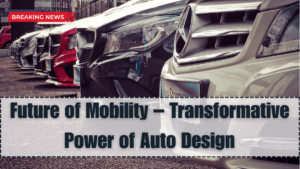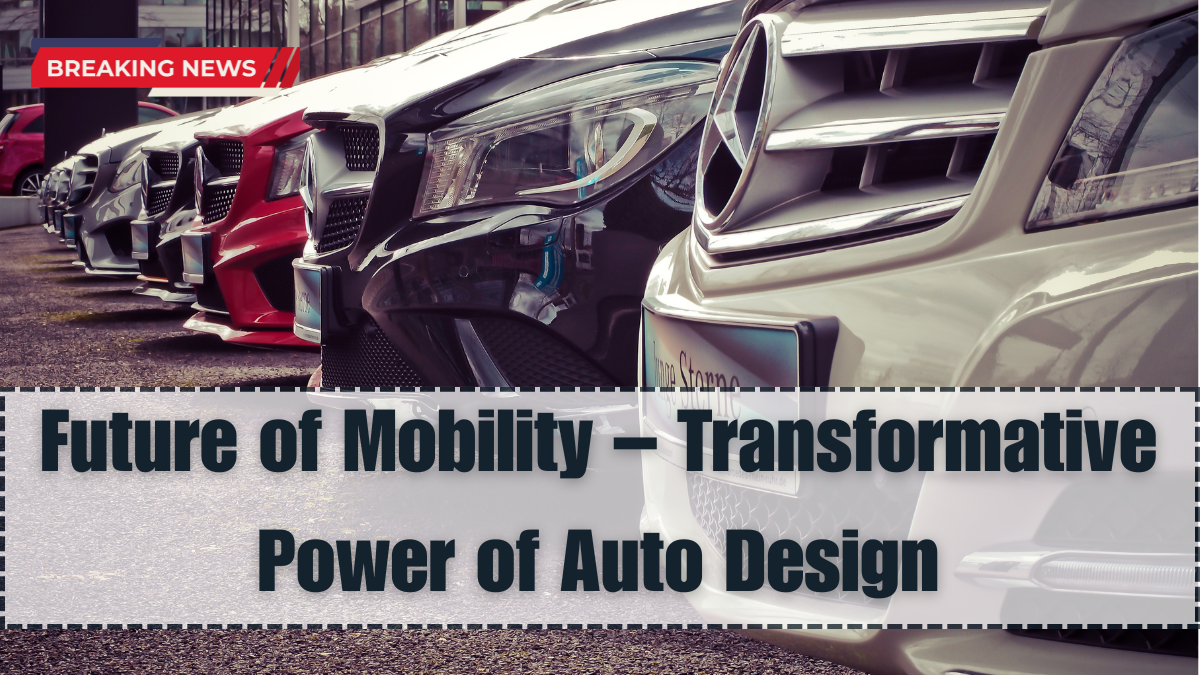The automotive industry is undergoing a major transformation, and at the heart of this shift are evolving mobility design trends. From electric vehicles to autonomous cars and shared mobility platforms, design is no longer limited to how a car looks — it now defines how a car thinks, connects, and adapts to its environment. In 2025, automotive design is about crafting entire experiences rather than just exteriors.
Car manufacturers are investing heavily in R&D, user behavior analysis, and sustainable design elements to meet the needs of a new era — one where vehicles are intelligent, eco-conscious, and deeply user-centric. The result is a reimagining of form, function, and emotion in vehicle design.

The Shift Toward Sustainable and Minimalist Design
Sustainability is one of the strongest forces influencing mobility design trends today. Designers are moving away from excessive ornamentation toward simpler, more responsible materials and forms. Consumers now demand vehicles that look good and feel purposeful.
Key sustainable design shifts include:
-
Use of recycled and vegan materials for interiors
-
Lightweight body construction to improve EV efficiency
-
Aerodynamic enhancements to reduce drag and boost range
-
Elimination of chrome and adoption of matte and natural finishes
This new wave of minimalism aligns with global eco-goals while maintaining a premium feel, especially in EVs and future-ready hybrids.
Connectivity and Interior-Centric Innovations
One of the most significant changes in mobility design trends is the shift of design focus from exterior to interior. With autonomous and electric mobility reducing the need for traditional dashboards, the cabin has become a digital lounge.
Current innovations include:
-
Panoramic infotainment displays integrated into dashboards
-
Ambient lighting tailored to passenger moods
-
Swivel seats and multi-configuration cabins for shared mobility
-
Voice-activated and gesture-controlled UIs
-
Advanced Human-Machine Interface (HMI) design integration
The goal is to make the driving and riding experience intuitive, immersive, and effortless — pushing the boundaries of what a car’s cabin can be.
Autonomous Mobility Reshaping Form and Function
The rise of autonomous vehicles is drastically reshaping both exterior and interior automotive design 2025 priorities. Since self-driving cars reduce human involvement in control, designers are rethinking vehicle architecture entirely.
Emerging design characteristics include:
| Design Focus | Innovation Approach |
|---|---|
| Exterior | LIDAR integration, smoother edges |
| Interior | Lounge-style seating |
| Control Systems | Retractable steering and pedals |
| Visibility | Transparent roof panels and AR windshields |
Autonomous vehicles also allow for shared usage, which demands durable materials, modular interiors, and easy-clean designs.
Emotion-Driven Design and Brand Differentiation
In a saturated market, design remains one of the most powerful tools for emotional engagement. Today’s mobility design trends emphasize brand identity through signature design languages, light signatures, and personalized driving environments.
Examples include:
-
BMW’s kidney grille-inspired EV reinterpretation
-
Hyundai’s Parametric Pixel lighting in IONIQ models
-
Tata Motors’ dual-tone + SUV stance approach for Gen-Z buyers
-
Mahindra’s XUV.e series with EV-specific futuristic themes
Consumers are choosing vehicles based on experience and emotional appeal, not just engine specs or brand names.
FAQs
What are the current mobility design trends in the automotive industry?
The trends include sustainability, minimalism, connected cabins, modular interiors, and emotional branding in vehicle design.
How is vehicle interior design evolving in 2025?
Cabins now feature digital displays, ambient lighting, gesture controls, and configurable seating, making them user-centric spaces.
What role does design play in autonomous vehicles?
Design focuses on comfort, visibility, and functionality — with lounge-like seating, retractable controls, and smart surfaces for shared or self-driving cars.
Are sustainable materials now common in automotive design?
Yes, manufacturers are increasingly using recycled fabrics, vegan leather, and lightweight materials to meet sustainability goals.
Why is auto design important in the EV segment?
In EVs, design influences battery efficiency, cooling, aerodynamics, and range. It also helps brands differentiate in a competitive space.
Click here to know more.
